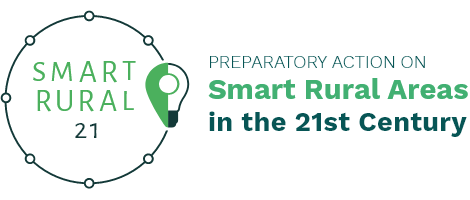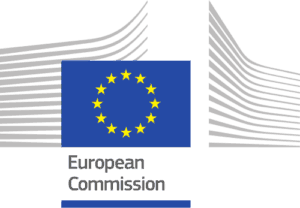Smart Solutions
Remote Workspaces Network
A searchable network of public and private distance-working facilities available for rent.
Implemented in : Kupland Network, South-east Estonia (Võru, Valga, Põlva County)
Country : Estonia
What’s the solution?
This solution involves bringing public and private providers of remote working services in an area under a single umbrella brand. Through a common online platform, these facilities can be searched and rented by individuals or small teams looking to work remotely in the area.
All the facilities offer well-designed spaces for work, normal to high-speed internet access (at least 50 Mbit/s) and generously sized desks with comfortable seats. Meeting rooms, printing services, plenty of electricity sockets, good lighting, comfortable room temperatures and the possibility to brew or purchase coffee or tea are also standard. Many locations also offer projectors and screens.
All services can be searched according to location, price and available facilities, such as catering facilities - kitchenette for self-catering, restaurant nearby, on-site restaurant or café, on-site catering - availability of a large screen/monitor, on-site accommodation, networking opportunities, and special diet food.
The main target group is technologically savvy workers that need a change of routine and environment.
What makes it smart?
The solution is smart because it:
- Shows business innovation - adding significant value to existing resources and potential (physical infrastructure, local nature, local people) creating new jobs and entrepreneurial possibilities;
- uses modern technologies effectively through the use of a digital platform to bring together local service providers and visitors and facilitate online marketing and branding;
- takes advantage of the rapidly evolving modern labour market, where remote working is an increasing feature;
- builds new linkages between different sectors and stakeholders – public, NGO and business sector; and
- enables to create new, innovative services for visitors and for local people.

How is the solution implemented?
- Bring together key local/regional development agencies and other stakeholders to identify the need, potential and appropriate geographical scope of a remote-working network;
- Agree the criteria, standards and services to be provided
- Establish an attractive brand identity for the network
- Build a network of local partners to be included in the distance-working network (businesses, museums, village houses, etc)
- Create an advisory board of active network members to engage them in the development of the network
- Establish a website and social media accounts to make the network visible
- Organise dissemination and marketing activities.
In what local context has it been applied?
The Kupland network of remote working spaces operates in three counties of Southeast Estonia: Võru, Põlva and Valga. The total population of this territory is 100 000.
The area is known for its beautiful nature and landscapes, and benefits from a pleasant, slower rhythm of life. Its economy is strongly reliant on tourism, however, tourism services tend to be very seasonal and do not provide a secure year-round income. Overall, this part of rural Estonia is lagging behind the urban areas in economic and social standards and depopulation is a big problem.
The main challenge was to change the peripheral image of these rural counties. There was a strong desire to find originality and prerequisites to create a new regional brand.
Even before COVID, remote working was getting more and more popular and there was an emerging need for remote working facilities. Equally, local businesses were trying to find new opportunities to diversify their services and increase their income. Both these trends were exacerbated by the COVID crisis.
Who was behind the implementation?
The initiative emerged from a collective brainstorming of several entities, initially brought together by the CEO of the local company TSENTER – the Centre of Competence for Wood Processing and Furniture Manufacturing. The key stakeholders involved were:
- Local development agencies in Southeast Estonia: Võru County Development Centre; Põlva County Development Centre; and Valga County Development Agency
- Local businesses: hotels, restaurants, holiday homes, holiday centres, production companies etc
- Museums and sport centres, creative houses, community houses etc
The initiative was supported by the Ministry of Finance.
What was the local journey?
- In 2016, the then CEO of TSENTER invited local development professionals together to find ways to improve the economic possibilities of the region.
- Over a few years of discussions and brainstorming, the idea of creating remote workspaces network was considered in detail, having its ups and downs. It was important to take enough time to think, to analyse and address the local development needs.
- In 2019 the top managers of the Estonian public sector visited the region and worked there for a few days up to week. They liked the idea of supporting a remote work region.
- The Southeast Estonia PR plan was created and then financed by the Ministry of Finance and the three counties. This plan included the development of the area as a remote-working region.
- On 17 March 2020, a project manager started working. The first months were all about creating a brand strategy with partners and building the network of remote working service providers.
- They established criteria and standards to be part of the network, inviting businesses and potential service providers to join and sign newly created cooperation agreements.
- One important challenge was ensuring that all facilities in the network meet the required standard and dealing with any related disappointments Some enhancements to create better working environments were made by network members.
- Eight members formed an advisory board in order to oversee and input into the further development of the network..
- To launch the new ‘Kupland network’ brand and to provide a central portal for potential clients, they created a website in 6 languages and set up social media accounts on Facebook
- They also conducted specific marketing activities….. An important challenge was to address certain client expectations for ‘traditional’ and larger remote working places set up solely for this purpose. Many people were not used to the idea of renting a remote-working space within a private property.
- Future challenges remain opening up the Kupland network for foreign customers, and in some places there is still a need for last mile connection of internet fibre-optic cable.
- The Estonian islands would like to follow our example to make similar remote network area.
What have been the main outputs & results?
- Currently there are 25 service providers/locations within the network. The companies that have joined are very different: there a small country hotels and guesthouses/B&Bs, restaurants, creative spaces like art galleries and workshops, sports centres, museums and farmhouses, as well as coworking offices in the region.
- Kupland network is becoming a well-known distance working area in Estonia and the number of visitors to the region has increased
- The extra visitors and remote workers have brought increased usage of community buildings, facilities in rural areas and additional income for local businesses and service providers.
What does it bring the village/community?
- The network has the potential to keep increasing the number of visitors to the region all year round and decreasing the seasonal effects of the main tourism industry (working holiday vibes all year round) – creating additional income for local businesses, communities, also during tourism “off-season”
- In addition, it could attract more people to move to live and work in the rural area, including young families – as they may be able to continue to pursue their current work activities remotely, with occasional trips to urban centres.
- The network also provides enhanced possibilities for cross-sectoral cooperation between different network members, including new and innovative services in the area (which can also benefit local people).
What’s needed
Financial resources
Main types of cost:
Set up/investment costs: 70 000 EUR: payroll + branding + PR + trainings to network + educational events to public
Ongoing costs: 5 000 EUR/month: payroll + PR + marketing + events
Funding received:
| Source | Amount | Funded |
|---|---|---|
| Ministry of Finance | 70,000 € | Set up/investment costs (payroll + branding + PR + trainings to network + educational events to public) |
| Valga, Võru, Põlva County development agencies and public funding via Ministry of Finance | 5,000 € | 5000/month financial contribution as follows: 33% paid by Valga, Võru, Põlva County development agencies; 67% paid by Ministry of Finance - ongoing costs of south-east Estonia PR plan 5000 EUR / month to support payroll + PR + marketing + events |
Human resources
Network coordinator/project manager – 1 full-time employee.
Eight members in advisory board.
Physical resources
The solution is based on the use of existing physical infrastructure, buildings and facilities of various types.
What to do…
- Active dialogue with advisory board and partners
- Quality criteria of the services
- Customer friendly (website in different languages, right attitude providing very good service)
- Build an attractive brand
and not to do
- Stay alone with your thoughts (sometimes fears)
- Involve bitter people with bad attitude or different motivation (e.g. someone criticizes the members of the network without knowing them or their service)

